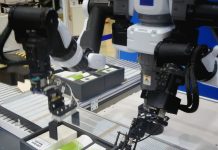Customers in the technological landscape of today expect high-quality, flawless software programs for both professional and personal use. They also expect a faster pace than ever when it comes to releasing software products. To accommodate these needs, software development companies, such as BairesDev, are making continuous testing the common practice throughout the Software Development Life Cycle and overall development process.
What is Continuous Software Testing?
As software delivery cycles continue to get shorter and shorter, traditional “build first, test later” methods are too slow and lack responsiveness for the dynamic needs of the industry. While speed is a huge priority, quality is also more important than ever. A small software glitch can have massive monetarily and reputation-wise repercussions for businesses. Traditional testing models prevent organizations from providing quality software at the desired speed, thus the need for the continuous method.
Continuous software testing is the process in which software products are tested frequently and early throughout the Continuous Delivery (CD) process. This methodology uses automated tests to help provide teams with immediate feedback to mitigate risks as quickly as possible throughout the development lifecycle. Continuous testing not only helps developers learn more about their software products on a regular basis, but it also gives them insight into the areas that require work for improved reliability and quality.
The Benefits of Continuous Testing
- Reduces Application-bound Risks – Whenever there are changes made to code, there is also room for errors and bugs. Repeating the same test over and over again to find errors leads to a waste of time and resources while increasing the overall cost of developing the software. Continuous software testing helps development teams detect errors very early on during the Software Development Life Cycle. In that way, they can be proactively dealt with while reducing the overall probability that they occur at all. This method helps prevent putting products in the hands of end-users with bugs or errors.
- Improved Consistency – Testing automation within a configured continuous testing process helps to keep things consistent throughout the entire cycle of development. Through continuous integration, every system and subsystem is kept on a seamless flow of production and immediate testing. This helps to sustain the rhythm of production and the required configuration for similar tests.
- Faster Releases – Code is rigorously tested on a continuous basis when testing is automated. This enables development teams to deliver assured results even while working at a fast pace. That results in clean code on a consistent basis.
- Continuous Coverage – Continuous software testing is typically implemented at the very beginning of the development process. This ensures that any and all potential errors are covered from the start and increases the coverage of the testing overall.
- Reduces Time Need for Reviewing – This method of software testing encourages testing and development teams to work together for the duration of the project while enabling rapid feedback. Being that the project is in a constant state of review and assessment, the time needed for a formal complete project review is minimal when compared to other testing methods.
Challenges of Continuous Software Testing
Continuous testing is a major shift from the way that traditional software development typically handles the testing process. Although this continuous method shortens the time needed for testing, improves software quality, and reduces the chances of errors making it into final production, it does have its own set of challenges. These include:
- Although a company may invest the effort and time necessary for moving its testing methods to the continuous model, the organization may still depend on legacy tools or processes as well. This can defeat the purpose and will not let them get the most out of continuous testing, as these older tools may prevent the team from achieving their goals. If organizations choose to move to this method, they must also adopt the most modern tools that can accommodate coding in a fast-paced, efficient feedback loop.
- It’s not uncommon for developers and testers to be unsure about their roles and responsibilities when working in a continuous testing environment as they are sometimes poorly defined. With constant writing of code and testing going on, tasks may not be clearly assigned and it may be unsure which team member or the team itself is responsible for tasks. Continuous testing requires detailed regular meetings so that team members stay informed about their expected tasks and responsibilities throughout the process.
- Continuous testing normally requires access to many different dependencies that may not be available at the same time due to the high distribution of modern applications. Developers are able to simulate interactions with unavailable dependencies if they need to, but this can be time-consuming and a bit of a hassle.
Successful continuous software testing gives businesses a competitive advantage while helping them deliver high-quality products to customers at a faster rate when compared to traditional testing. It is not easy for companies to make the leap to the continuous method as it comes with its own set of challenges, but it can be incredibly beneficial in the long-run.







